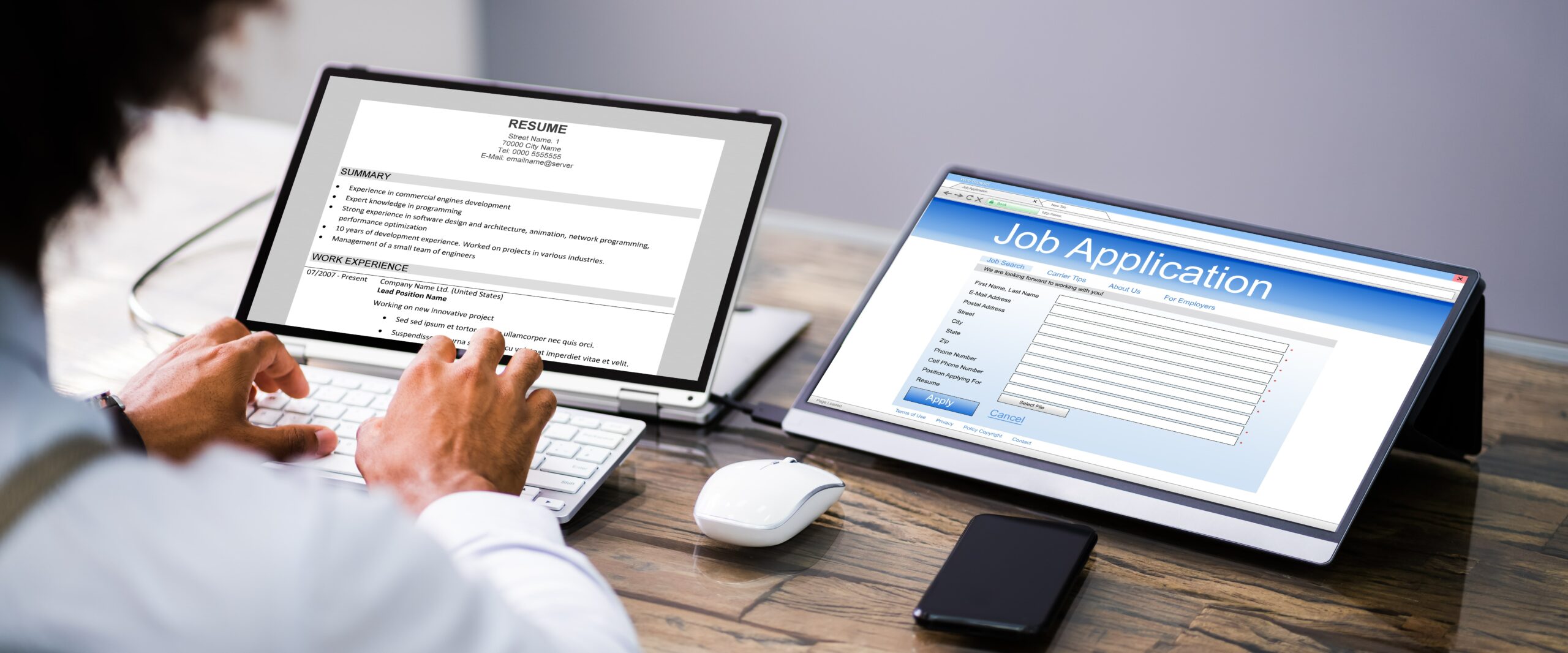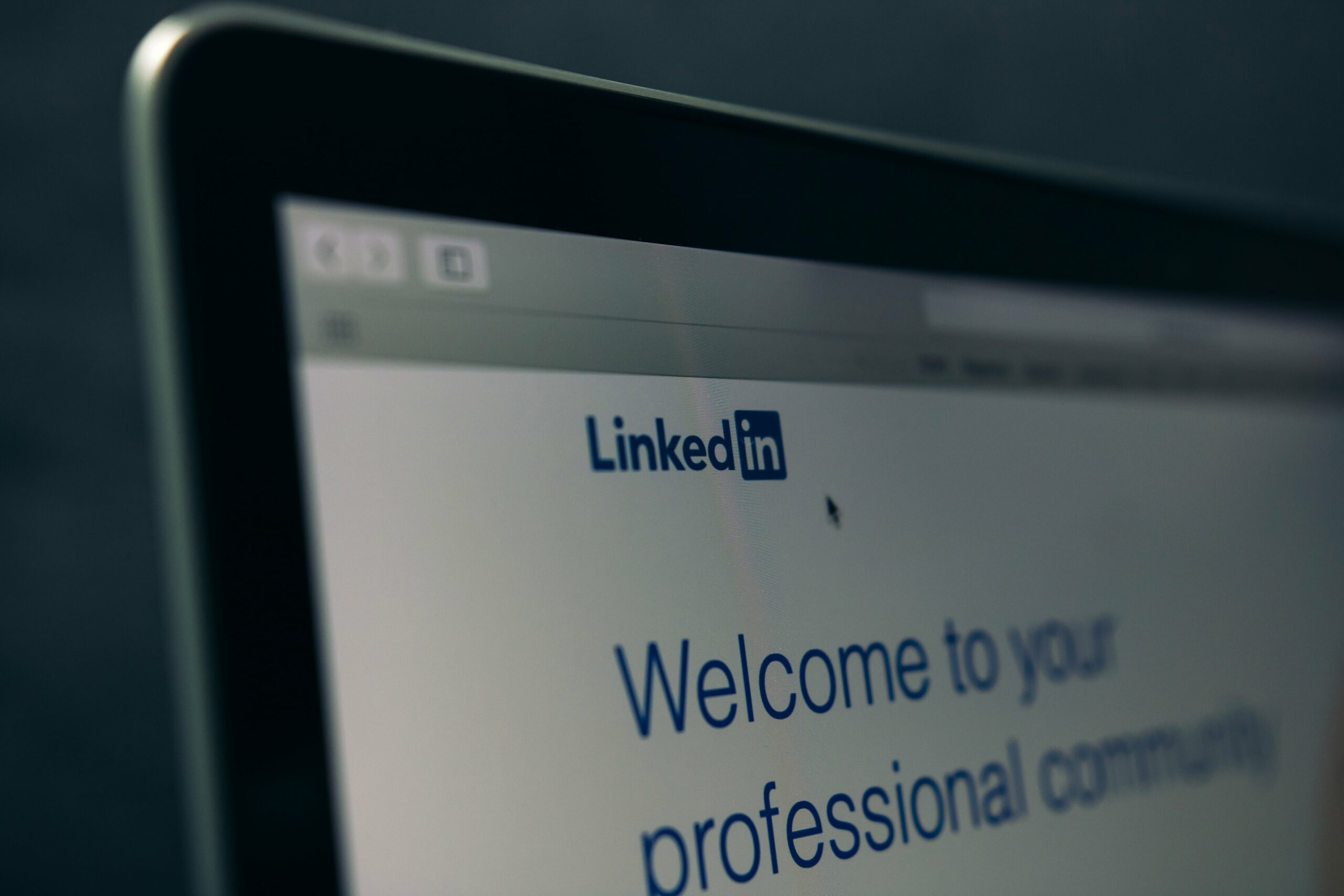If you are trying to apply for a job at the moment then you are probably all too aware of how hard it is to get an employer’s attention, especially if you are trying to switch over to a new industry where you don’t have a lot of relevant experience.

You may be feeling full of despair after receiving rejection after rejection, or even worse handing out CVs and hearing nothing back from any employer. Applying for new roles can be really disheartening.
But don’t worry, we have 20 tips for you today that are going to make you stand out from the crowd. We are going to help you put together a CV and LinkedIn profile that are so good, employers will find it impossible to ignore.
We are also going to help you design your LinkedIn profile in a way that makes you appealing to all kinds of businesses and gets you job offers without you having to apply for them.
The Importance of a Great CV

CVs are an incredibly important part of applying for a new job. They are the first experience of you that an employer has – you need to make sure that you make an excellent first impression so that you can stand out from the crowd.
Many people think that this is impossible to do with a CV – after all, they are just a piece of paper covered in bullet points detailing your job history… But this just isn’t true. Anyone who has a good CV will tell you what a difference it can make to your job prospects.
Your CV is your chance to show an employer how well suited you are for their open role. According to Forbes, the average job gets 118 applicants. Your CV is your chance to stand out amongst a group of over 100 people.
But how do you do that? Well, we are going to tell you in this article.
The most important thing to remember is that you should be writing a new CV for every role that you apply for. You need to show the employers that you are interested enough in the job to make them a custom CV.
Tips for Writing a Great CV

Today, we have 15 tips that will help you to write a better CV and will improve your chances of getting the job that you want.
Follow all 15 pieces of advice and you will find that you are getting more interviews.
1. Get the Basics Right
You must get all the basics right on your CV. This means that your spelling and grammar must be correct. There can be no typos on your CV.
Many employers will throw a CV straight into the bin if they see a typo. It shows them that you have either rushed your CV or that you haven’t taken the type to proofread it.
If you have written in your CV that you are someone who pays attention to the details then you have just proved yourself wrong.
We understand that mistakes happen but you have to set up a system that makes sure that these mistakes are caught before your CV is in the hands of an employer.
If proofreading is not your strong point (or you have been looking at your CV for so long that you can’t see the mistakes anymore) then you should ask at least one other person to proofread it for you. Preferably three other people.
You will also find that printing out your CV and reading it on paper will make it easier to spot mistakes.
2. Presentation is Key

Next, you will want to make sure that your CV looks good. If your employer has to read over 100 CVs then you will want to make reading your CV as easy as possible for them.
You can do this by making sure that you have wide margins on either side of the page. That everything is correctly lined up. By making sure that you do not use writing that is too small.
You should also try to include colours on your CV. If you are going to do this then you need to make sure that the colours complement each other and that they are not too bright or gaudy.
If you are applying for a job in graphic design or in web design then you might want to consider making a website to act as your CV. You should make sure that this site is easy to navigate and looks modern.
3. Stick to no more than Two Pages Of A4
More employers and hiring managers will not read a CV if it is longer than two pages.
Not being able to fit all your most relevant information into two pages shows that you don’t understand the skills that are most important to the employer. You don’t have to put a description for every element as you will be able to talk about these at greater length during the interview.
Many people think that having a really long CV shows that you are very experienced and very talented. However, what a long CV actually says about you is that you don’t know how to prioritise or what the job requires.
If your CV starts to overrun then it is time to look at it with more scrutiny. Does your employer really need to know about your high school hobbies? Do they need to know what clubs you were in during college? Would it be better to talk about your most recent job rather than one you did 10 years ago?
4. Understand the Job Description
If you want employers to take your application seriously then you need to show them that you are the perfect candidate for the job. You can only do this if you understand what the job is and what is required from you. You can get all of this information by studying the job description and the company’s website.
Your employers have a specific set of requirements in mind for their employees and they will let you know what these requirements are through the job description. It is your job to work out what these requirements are and use your CV to highlight that you are perfect for the job.
Take the time to look on the employers’ website and their “about us” page. Borrow the adjectives that they use to describe themselves and use them in your CV. This will make it look like you and the company share the same values. It will also show the employer that you have done your research.
5. Tailor the CV to the Role
Some people will say that you can use the same CV for multiple roles – we do not think that. In fact, we are of the opinion that you should be making an individual and unique CV for each role you are applying for. This is what most employers would expect you to do.
Tailoring your CV to each role has two purposes – (1) showing that you are the right person for the job and (2) that you care enough about the job to put in the effort to make a unique CV.
If you are only applying for one job then you will probably find that you naturally make a unique CV for that job. However, if you are applying for multiple jobs it can be tempting just to hand out a general CV. Rather than making you appealing to multiple employers, this technique actually makes you less appealing to all of them.
Go through the job description point by point and make sure that your CV shows you have every skill, interest, and experience they are looking for.
6. Making the Most of Skills
When you are putting together your CV, you will want to make sure that you include both concrete skills that are relevant to the job and transferable skills that show you are capable of going beyond the job description.
Your concrete skills are things like your ability to use Microsoft Office, knowing how to use SEO tools, or how to drive. The job description will have a list of concrete skills you will need to do the job.
Your transferable skills are things like your ability to communicate with others, learn things quickly, and remain calm under pressure. These will all be listed in the job description.
It is important that you include both types of skills on your CV.
You should give an example of how you have used each of these skills in the past. You shouldn’t be afraid to say that you haven’t always had these skills and that you have only learned some of them recently.
7. Making the Most of Interests
We all have a wide range of interests but not all of them are appropriate or relevant enough to list on a CV.
If you feel that you need to devote space on your CV to talking about your interests then you should make sure that you use it well. Tailor your interests list to show that you have the kind of skills, work ethic, and personality that your employer is looking for.
A good example of this is rewording a hobby to make it sound more professional. For example, if you design video games but this isn’t relevant to your field, you can talk about how you had to learn code and set deadlines to complete your products. You may even have had to run a team.
Explaining your interests in a way that is more relevant to the job description will help your possible employers see you and see your CV in a new light.
8. Making the Most of Experience
Just because you were once told that an experience will look good on your CV, doesn’t mean that it is relevant to the job you are applying for. Your most recent experience may not be too relevant either. This is fine, there are ways to work around this.
The best thing you can do is talk about all your work experience but devote the most space to the most recent work you have done, as well as, the most relevant work you have done.
For example, if you are applying for a job at a publishing house and your last job was in a grocery store while you were in college, but before college, you worked in a bookstore.
Then you should spend some time talking about the relevant skills that you learned at the grocery store. Then also spend some time on the experience you gained during your time at the bookstore. But you don’t need to spend too much time talking about the time you manned a hotdog stand when you were 16.
9. Including References?
There are many different schools of thought when it comes to whether references should be included on a CV and how they should be included.
There are some people who say you should hand your CV in with written references. This is not something that we recommend you do – this will put a lot of pressure on the people that you ask to write out these references for you. Also, many bosses like to talk to the references themselves – as they have specific questions in mind.
Some people think that you should include the names and the contact information of your references. If this is something that you want to do then you should get your references permission to do this beforehand.
Some people do not like their private information being handed out. The reason we do not recommend this is because it takes up a lot of room on the CV.
Instead, we recommend putting the following statement at the end of your CV: “references available upon request.”
10. Keep your CV Updated
This is a tip that will help you in the long run rather than immediately before you are applying for a job.
Every time you gain a new experience or skill or do a new task for work – make a note of it and update your CV. You may end up deleting some of this when you edit your CV down to 2 pages before applying for a job.
However, constantly adding to your CV when new things happen is much easier than trying to recall everything you have done over the last few years. This way you won’t forget any important information or skills you have picked up.
This can also be really helpful when you have been offered a new job or training opportunity unexpectedly and you need to get an up-to-date CV together quickly.
Doing a little work often on your CV will give you a better result than doing a lot of work in one go.
11. Keep the CV Grounded
Where you can, you should try to hand in physical CVs and personal statements. Most employers prefer to read physical CVs and handing in a CV in person gives you a chance to make a connection with the person hiring before they even look at your CV.
When you are writing your CV you want to avoid hyperbole as much as you can. You do not want to come across as arrogant to anyone that is reading your CV.
You can avoid this tone by being very matter-of-fact about your skills and experience. Set them out using simple and succinct language and avoid over embellishment.
Try to use professional language throughout your CV and personal statement. Keep your sentences short, use bullet points where you can, and try to avoid filling up too much of the page.
You want to avoid sounding like you think that you are too good for the job or the company you are applying for.
12. Include a Personal Statement
With every CV that you hand in, you should also include a personal statement (also known as a cover letter). This is your chance to be a bit more personal and to show the employer a bit more of your personality.
Your personal statement is your chance to explain why you want to take the job, why you want to work for that particular company, and why they would be smart to pick you.
You will need to tailor the tone and the content of your personal statement to the type of role you are applying for.
If you are applying for a creative role then you are going to want to use your personal statement to show off your creativity. You can be less formal in this type of statement and you can have a little more fun with it.
However, if you are applying for roles like being a teacher, lawyer, or a job in a large business then you are going to want to consider creating a more formal personal statement.
13. Tell the Truth
If you get caught lying on your CV then you can lose out on the job offer, get fired, or even end up in trouble with the law.
Depending on the job that you are applying for, there can be really serious consequences if you lie on your CV about your qualifications or your experience. Most notably if you are applying to work with children or you are applying to work for a government agency.
However, even if there are no legal consequences to lying on your CV you should still avoid doing so.
Lying on your CV to get a job that you are not qualified for can lead to you losing your job, the company losing money, and you may even find it difficult to get a job in that field again.
Rather than fabricating your CV, you should focus on the skills you do have, rather than the skills that you are missing.
14. Show Figures

We mentioned above that you will want to tell the truth in your CV, now we are going to talk about what information you should share and how you should back it up.
You will want to talk about the skills that you have (the ones that are relevant to the job you are applying for) and use examples to back them up.
For example, if you save that you have the ability to think outside the box, you can talk about an example like how you changed the company over to better software and saved £10,000 a year on IT bills.
Or if you are talking about your sales skills you can use examples based on the KPIs your company uses to track success.
Again, you want to make sure that you are only sharing truthful information, as there is a chance that the employer will check these facts with your current employer or references.
15. Consider Keyword Friendliness
Our final tip is to use the power of keywords and buzzwords to make your CV stand out more to the employer.
We would recommend combing through both the job description and the employers’ website to find buzz words that they use multiple times and other important keywords.
Then make sure that most if not all of your keywords are included in your CV. This will make you appear more in line with what the brand stands for before the employer has even met you. They will see the shared values and will be more likely to interview.
It is really important that you cover every keyword, skill, and experience talked about in the job description in your CV. You want to show that you are the complete package and can offer the company everything they want.
A trick for making sure you do this is to print out the CV and physically cross off each bullet point as you include it in your CV.
LinkedIn Tips to Make Your Profile Stand Out

LinkedIn is another great tool for those who are on the hunt for a new job or who are looking for new opportunities.
LinkedIn allows employers to search for people by skills and by experiences. If you have filled out your LinkedIn profile to a high standard, you might find you start getting job offers through the site.
16. Choose the Right Profile Picture
Profiles with photos on LinkedIn get 21 times the number of views that pictureless profiles do. So, it is important that you upload a picture to your profile.
However, you shouldn’t upload any old pictures. You need to make sure that they are appropriate for the platform.
You cannot enlarge a picture on LinkedIn so you need to make sure that your face is clear in the image and it takes up a good 60% of the photo.
You want to make sure that the picture is recent and that it is high quality. You should also choose a professional photo. The background should be blank and if you wear a uniform for work you should include that in the picture. You do not want to use a personal photo or one that includes other people.
If in doubt you may want to consider getting a set of professional headshots done. You will find lots of uses for these on top of LinkedIn.
17. Make your Headline More than just a Job Title
Your LinkedIn headline sits just below your photo on your profile. When people are shown your profile they will be able to see your photo, your headline, and the company that you currently work for.
You should include your current job in your headline but you also want to include a few more things.
If you are looking for a new job then you should talk about how you are open to new opportunities in your headline. You do not have to be explicit about it.
However, if you know what industry you would like to move into then you can also mention that in your headline.
You may also want to mention some of your personal interests in your headline – for example, if you are looking to move into a job that involves coding you could list the coding languages that you know in your headline.
You will also want to list any higher education qualifications that you have in your headline.
18. Turn your Profile Summary into a Story
When employers are looking through LinkedIn, they may read 100s of profiles, so you need to think about how you can turn yours into something memorable.
One of the ways that you can do this is by using your profile summary as more than just an opportunity to regurgitate your CV. Instead, turn it into a narrative that gets the reader invested in who you are as a person and your personal journey towards your career goals.
There are many different types of stories you can tell. You can talk exclusively about your successes and your plans for the future.
However, if you really want to get the reader involved then you need to talk about both the highs and the lows, and show the reader how they have made you a better person and a more valuable employee.
This is a particularly good thing to do if you want to get a role that involves communication or relationship building – you can use this section to really show off your skills.
19. Grow your Network and Make Connections
LinkedIn is built around the concept of networking and making connections. So, the more connections you make on the platform, the more you are going to get out of it.
You should be aiming to build at least 50 connections within your first two months of joining the platform (if you’ve already been on the platform for longer than that then set yourself the goal of building 50 connections within two months of finishing this article). That works out as less than one new connection per day.
You should start by connecting with all the people you currently work with, then the people you previously worked with, then people you went to college with and high school. After that, you should look into adding family members and friends to the family. This will give you a good base network to build on.
Follow any companies you want to work for as they will often advertise roles on LinkedIn before anywhere else.
20. List your Most Relevant Skills
It can be tempting to put as much information as you physically can on your LinkedIn page. However, you need to remember that your profile is like an online CV and that all the rules we mentioned in the section above still apply here.
Therefore, you should be selective about the types of skills and experiences that you choose to promote on your LinkedIn profile. In the skills section, you want to make sure that you are only including your most relevant and impressive skills.
You do not need to mention that you can use Microsoft Word – this is expected of everyone these days. However, you should talk about your ability to use more niche software that is relevant to your industry, your ability to talk in front of large audiences, and any key qualifications that you have.
You want to show any possible employers that you are aware of what your strongest skills are and that you know what skills they find most valuable.
Summary

Your CV and LinkedIn profile are the first representations of you that any employer will see – so, you want to make sure that you use it to make a good impression. A good CV and LinkedIn profile are the key to reaching your career goals – without these, you will struggle to move forward.
When you are writing a CV you want to make sure that you are truthful about yourself and your experience. You will want to make sure that you tailor the CV to the job that you are applying for and the company that you are interviewing with.
Well, what are you waiting for? It is time to go out there and get yourself your dream job!